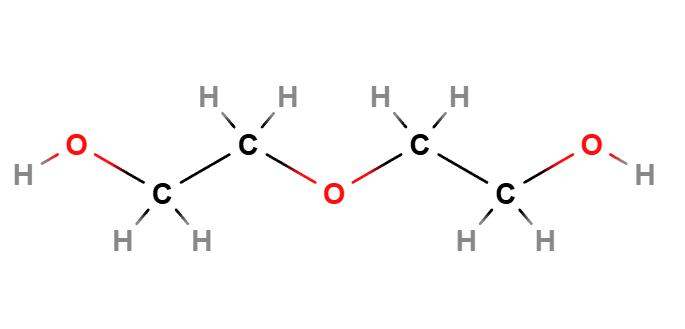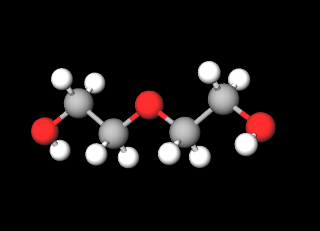Diethylene glycol, also known as Diglycol, is a colorless, odorless liquid that is commonly used as a solvent and humectant in cosmetic and personal care products. It is valued for its ability to retain moisture and improve the texture of formulations.
Chemical Composition and Structure
The chemical composition of Diglycol includes:
- Ethylene Glycol (C₂H₆O₂): Composed of two hydroxyl (–OH) groups attached to a two-carbon chain, making it a diol.
Structurally, Diglycol is a simple organic compound characterized by its two hydroxyl groups, which provide it with hydrophilic properties, allowing it to attract and retain moisture.
Physical Properties
- Appearance: A clear, colorless liquid.
- Solubility: Highly soluble in water and many organic solvents.
- pH: Neutral, typically around 6-7 in solution.
- Boiling Point: Approximately 198 °C (388 °F).
- Stability: Chemically stable under normal conditions, but should be protected from strong acids and bases.
Production Process
- Synthesis: Diglycol is produced through the hydration of ethylene oxide, a process that involves the addition of water to ethylene oxide under controlled conditions.
- Purification: The crude product is then purified through distillation or other separation methods to remove impurities and unreacted materials.
- Formulation: Once purified, Diglycol is incorporated into cosmetic and personal care formulations, often combined with other ingredients to enhance product performance.
Applications
- Medical: Limited use in certain medical formulations, primarily as a solvent or vehicle.
- Cosmetics: Widely used in moisturizers, creams, lotions, and serums for its humectant properties, helping to keep skin hydrated and improve product texture.
- Industrial Uses: Utilized in various industrial applications, including antifreeze and as a solvent in paints and coatings.
Environmental and Safety Considerations
Diglycol is generally regarded as safe for topical use in cosmetics and personal care products when applied according to recommended guidelines. It is not known to cause significant irritation in most individuals. However, individuals with specific sensitivities should exercise caution. Responsible sourcing and formulation practices should ensure that the compound is free from harmful contaminants and produced with minimal environmental impact.
Molecular Formula C4H10O3
Molecular Weight
CAS 111-46-6
UNII 61BR964293
EC Number 203-872-2
Synonyms:
2,2'-Oxydiethanol
Diethyleneglycol
2-Hydroxyethyl ether
![]() Diethylene glycol
Diethylene glycol 


